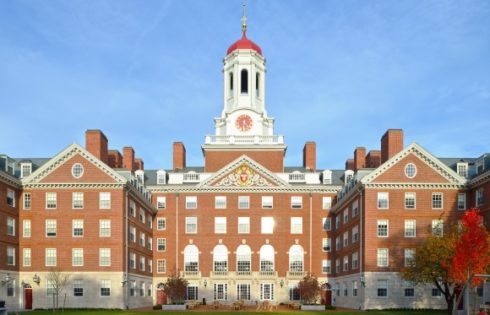
Turns out rates of obtained doctorates is good predictor of faculty composition
Want to know the percentage of racial minorities who will be hired as professors in the coming years? Just look at the percent who, no surprise, earn doctorates.
That is one conclusion to draw from a new federal report that aimed to look at claims of racial discrimination in higher education hiring.
Though the Government Accountability Office says it found a gap between doctorate earners and faculty hiring, it appears mostly insignificant.
The federal report, released on April 9, also said there is minimal evidence to support the claim that students benefit from having professors that look like them.
The report began in November 2021 as a response to Virginia Democratic Congressman Bobby Scott. “Research has shown that faculty diversity plays an important role in student completion and can have a major impact on students’ sense of belonging and retention rates,” Scott claimed recently, according to a statement in The Hill. “That is why I asked the GAO to study the state of faculty diversity at institutions of higher education and the hiring and retention policies to promote faculty diversity.”
“The good news is that faculty diversity has improved over the last twenty years,” Scott said. “The bad news is that faculty diversity is still not representative of the students they teach.”
The GAO report found “7.6 percent of faculty were Black compared to 7.7 percent of new doctorates and an estimated 11.9 percent of the civilian labor force.”
Of course, new doctorates and current faculty composition across the country won’t perfectly match up for at least two reasons. First, the composition of faculty across the country is the result of years of hiring people at different times. Someone who received a doctorate in 1990 is still teaching now.
Second, individuals with doctorates have other options, such as consulting, government work, or research outside of a university – only 33 percent go into teaching, according to a report looking at 2016-2018 data.
The number also does not include educated immigrants who came here to teach, but earned their doctorate outside the United States.
The report also found “6.8 percent of faculty were Hispanic compared to 9 percent of new doctorates and an estimated 18 percent of the civilian labor force.”
MORE: White professor wins $750K racial discrimination suit
The GAO draws from this data a “pipeline issue exists, as one factor that influences faculty diversity.”
But racial minorities and women are getting hired at higher rates than before. The report “found higher proportions of Asian, Black, and Hispanic faculty among newly hired faculty than among the overall faculty population.”
“Similarly, women represent a higher proportion of newly hired faculty than men,” the report stated. “As such, the above trends toward increased proportions of Asian, Black, Hispanic, and women faculty may continue.”
It is not clear this will necessarily benefit racial minorities or female students.
“We found inconsistent results when using national-level data to examine the relationship between faculty diversity and student outcomes, such as graduation, satisfaction with education, and student income after graduation,” the GAO concluded.
Using several models, the researchers “found no consistent statistically significant relationship between faculty diversity and student outcomes, with many of our estimates finding no such relationship.”
Some research that found positive relationships saw diminished proof after controlling for other variables.
Even research that found, for example female STEM students may benefit from having a woman professor, found male students performed worse.
“Another study found that while women students’ performance in math and science courses was positively related with having a woman instructor, men’s performance in math and science courses was negatively related,” the report stated. “However, this negative relationship for men students was smaller in magnitude than the positive relationship for women students when student-specific factors were accounted for.”
Whether some go into teaching, consulting, or government, they are still part of a small group – just five percent of the country has a doctorate degree.
This makes all doctorate holders, by default, an elite group.
MORE: Scholars question ‘prevalence’ of female hunters in ‘forager societies’
IMAGE: Dragen Zigic/Shutterstock.com
Like The College Fix on Facebook / Follow us on Twitter







Please join the conversation about our stories on Facebook, Twitter, Instagram, Reddit, MeWe, Rumble, Gab, Minds and Gettr.